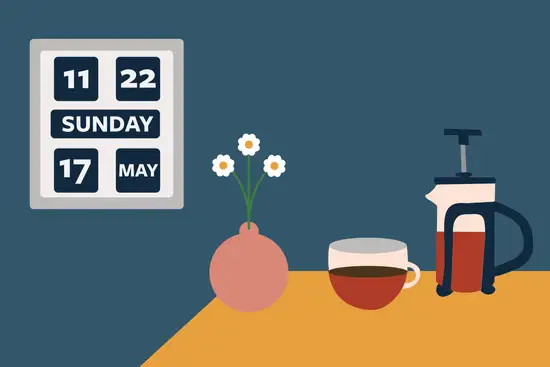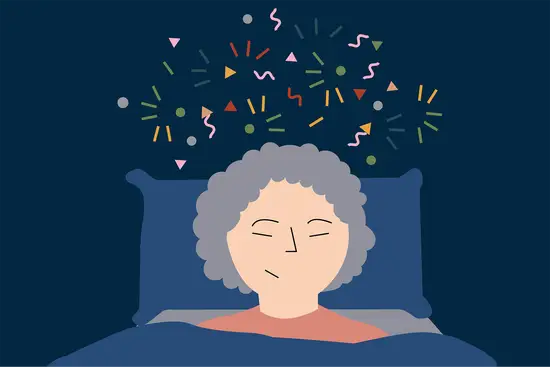Key points
You might not realise it, but your bedroom setup can have a huge influence on how well you sleep. We’ve gone in-depth on what goes into creating your perfect bedroom and we’ll cover:
- budget-friendly tweaks that can improve your bedroom environment
- what you really should and shouldn’t include in your sleep space
- how light, temperature and sound levels are key to good sleep
- what to do if your sleep doesn’t improve even with the perfect bedroom setup.
Your bedroom should be your sleep sanctuary
Taking steps to creating your perfect bedroom is one of the simplest ways to improve your sleep. Whether you love your sleep space or not, if you want to boost your sleep, a good starting point is to identify if anything in your bedroom setup could be disturbing your sleep.
We’re not just talking aesthetics here. You can have the most beautiful bedroom in the world but if you’re being woken every night by noisy neighbours, then your sleep is going to be affected.
Maybe your room’s not quite as tidy as you’d like it to be but your amazing mattress helps you to sleep like a baby. It’s all about creating a balance in your sleep space to encourage the best sleep possible for you.
We’re going to give you all the ingredients to make your bedroom the ideal place for sleep and we’ll back it all up with a good sprinkling of science to explain exactly how simple changes to your bedroom can boost your sleep.
So let’s jump straight in:
Try to picture your current sleep setup. Think about what you see, hear and feel when you’re in that space. Does it feel like the perfect place to fall asleep? Do you feel relaxed just thinking about your sleep space or is it quite the opposite?
Does anything immediately stick out that gets on your nerves or you wish you could change, either when you’re just spending time in there or when you’re actively trying to get to sleep?
Maybe a streetlight makes your room bright when you’re trying to fall asleep or perhaps bird song wakes you up ridiculously early each morning. If something jumps out at you, note it down. We’re going to cover lots of ways to deal with common sleep intruders!
If nothing comes to mind, great! That’s one less thing to fix. Next think about how your room feels: is it cold, hot or just right? Is it sometimes draughty or can it get a little stuffy? Do you keep it spick and span or is there a good collection of dust bunnies under the bed?
Don’t forget your bed too. Is it cosy, comfy and inviting or are you way overdue a new mattress? Do you wake up stiff because you keep meaning to replace that old, flat pillow but just never get round to it?
Spending a little time really considering the good and the bad of your bedroom can help you to spot something that might be affecting your sleep.
Crafting the ideal bedroom setup shouldn’t be overwhelming and you don’t need to address every little thing at once to create a great sleep environment. Small changes can have a big impact on your sleep, so what you choose to change is very much up to you.
In this article we’ll guide you through everything you need to know to create the perfect place to sleep. We’ll start with the rule that most of us are likely break when it comes to our sleep space…
Is your sleep problem bigger than your bedroom?
Creating the perfect sleep haven could help you sleep better, but if you have a sleep disorder you may need more help to get your sleep back on track. That’s where we can help. Our sleep improvement course will help you identify what’s coming between you and the sleep you deserve and we’ll provide you with all the tools you need to get back to sleeping well.
Your bedroom should be for sleep only
This seems pretty obvious: bedrooms are for sleeping. But when it comes to your sleep, it can really help to minimise what else you use this space for.
Your bedroom should be a haven of calm to help you relax, unwind and fall asleep. In an ideal world, the perfect bedroom will be for sleep and intimacy only.
This means your bedroom shouldn’t also be your office, games room, cinema, gym… or anything else. Whilst this can be a challenge in modern living spaces, if possible, your bedroom should be the room in your home that’s solely devoted to sleep.
Think about it: if your bedroom’s also doubling as your office, you may find it difficult to switch out of work mode. That email you meant to send may nag at you as you’re trying to sleep. If you’re gaming in there, the temptation to play one more level might be too much.
Similarly, watching movies or working out in this space should be avoided. These are all activities that are stimulating, and the bedroom is somewhere you want to be able to associate with relaxation and calm.
And while we’re on the subject of stimulating activities… How many of us enjoy getting into bed and maybe scrolling through social media, reading a book, watching Netflix or just listening to music as you fall asleep?
While these might seem like harmless and relaxing activities, they have the potential to interfere with your sleep. Depending on what you’re watching or reading, you could unwittingly be stimulating your brain during a time when you should be trying to wind down.
For example, watching a horror or action movie isn’t going to help you relax and unwind in preparation for sleep. Plus, your brain can make connections between performing these activities and falling asleep. This is known as a sleep association.
What does this mean? If you go to bed every evening and fall asleep reading a book, then your brain may start to make the association between reading and sleeping so you need to read in order to fall asleep.
But imagine one day you don’t have your book. You get into bed and your brain is waiting for the cue to sleep: reading. You don’t read, so your brain stays active and you find it difficult to fall asleep.
This is an example of a negative sleep association. In the run-up to sleep, you want to avoid engaging in activities that can lead to negative associations, such as falling asleep with the TV on or scrolling through your phone.
On the other hand, you can create positive sleep associations by following a wind-down routine or simply by performing the same activities before bed, such as brushing your teeth or spending a couple of minutes on a relaxation exercise before sleep.
Finally, many of the activities listed involve exposure to light. Bright light around bedtime, especially light emitted by screens (TVs, tablets, smart phones etc.) can interfere with production of melatonin, a hormone responsible for making you feel sleepy as bedtime approaches.
Ideally you want to wrap up any screen time well before bedtime and keep lighting low in your bedroom. Even lights from chargers or a laptop standby light have the potential to interfere with your sleep, which is yet another good reason to keep these items out of your sleep space.
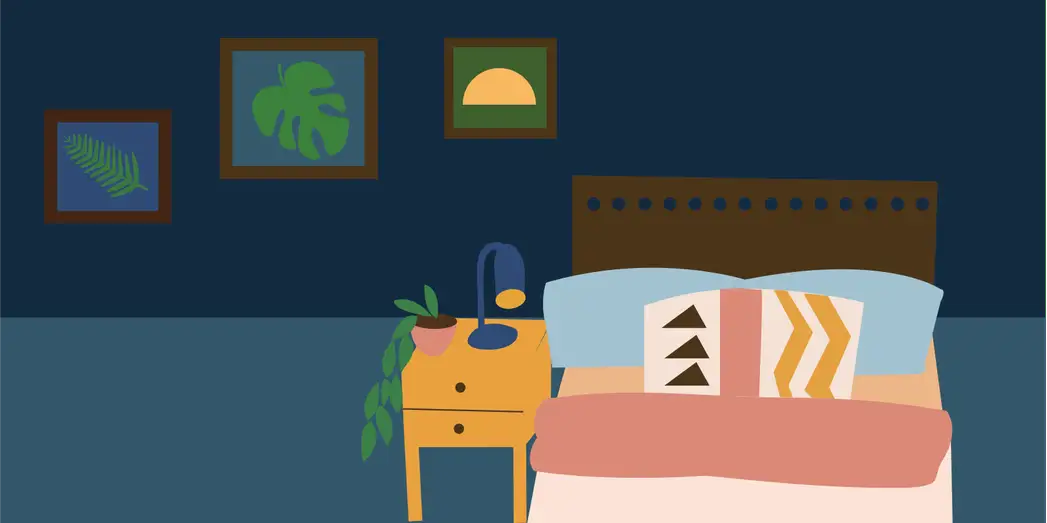
Try to keep your bedroom tidy and uncluttered
We’ve already mentioned that you want to keep other activities out of your room, but you might also want to consider decluttering your sleep space. If your room is messy or it’s being used to store extra stuff then now might be the time to have a sort out.
Mess and clutter can increase feelings of stress and anxiety and can interfere with your ability to sleep.1 So that pile of laundry that you keep meaning to sort through and put away could be contributing to why you’re finding it hard to drop off at night.
Clutter stimulates our brains, making it difficult to relax. On top of this, messy or cluttered sleep spaces will be harder to keep clean and will hold onto dust and allergens, such as pollen, dust mites and pet dander.
Sensitivity to dust mites in particular affects somewhere between 5-30% of the general public,2 and dust mite allergy is highly associated with poor sleep.3 If you have allergies, you may see an improvement to your sleep if you keep to a very regular dusting and cleaning routine.
Even without allergies, a cleaner, clutter-free bedroom should allow you to breathe easy and sleep soundly. So taking steps to limit clutter in your sleep space may be a pretty simple step to improving your sleep.
The colour of your bedroom may also influence your sleep
Studies have shown that the colours around us can affect our mood, behaviour and sleep.4 5 6 You can use colours to your advantage when you’re creating your perfect bedroom. If there’s a certain colour that makes you feel calm and relaxed, consider including it in your bedroom decor.
Certain colours are more associated with arousal, such as warm colours like red and yellow. Cool colours, such as blue and green tend to be less arousing and more associated with calm.4 5
One study actually found that people fell asleep faster when their sleep space was lit up with their chosen colour, which indicated that the colour of your sleep surroundings can influence your sleep.6
So, for example, if you find lilac to be a soothing colour, you might find you sleep well in a room that’s painted this colour or with some lilac furnishings in it.
And if there’s a colour in your bedroom that makes you furrow your brow, consider changing it for a colour you find more calming. We all have our own colour preferences, so it will depend on what you personally like.
So we’ve covered how what you see in your bedroom can affect how you sleep. We’ll move on to how your bedroom feels. Let’s explore how the temperature of your sleep space affects your sleep.
Temperature plays an important role in your sleep
The ideal temperature range for your bedroom is somewhere between 15.5-21°C (60-70°F).7 8 This is really a matter of personal preference so what works for you may be cooler or warmer than this.
It’s not just the temperature of the room that’s important for getting good sleep. The temperature in your direct sleeping environment so under the duvet is just as important. When you’re in bed, you need to be able to keep your body temperature stable.
The temperature should be around 29°C, which will ensure your body doesn’t lose or gain heat unnecessarily.9
Think of it this way: your body gives out heat in bed, much like a giant hot water bottle. Because of this, you’ll heat up the space between your sheets just by being in bed.
During the night, your body actually needs to lose heat to maintain an optimal core temperature. It does this mainly by losing heat through your head and face since these are the only bits that tend to stick out from under the duvet.
If your bedroom’s on the cooler side, it will enable you to efficiently lose heat from your extremities, leading to better sleep.
If your bedroom’s too hot, or you’re too hot under your duvet, it’s more difficult for your body to lose heat and this can cause disturbed sleep. The same’s also true if you’re too cold as this means your body has to work hard to maintain its optimal temperature and, again, this can disturb sleep.
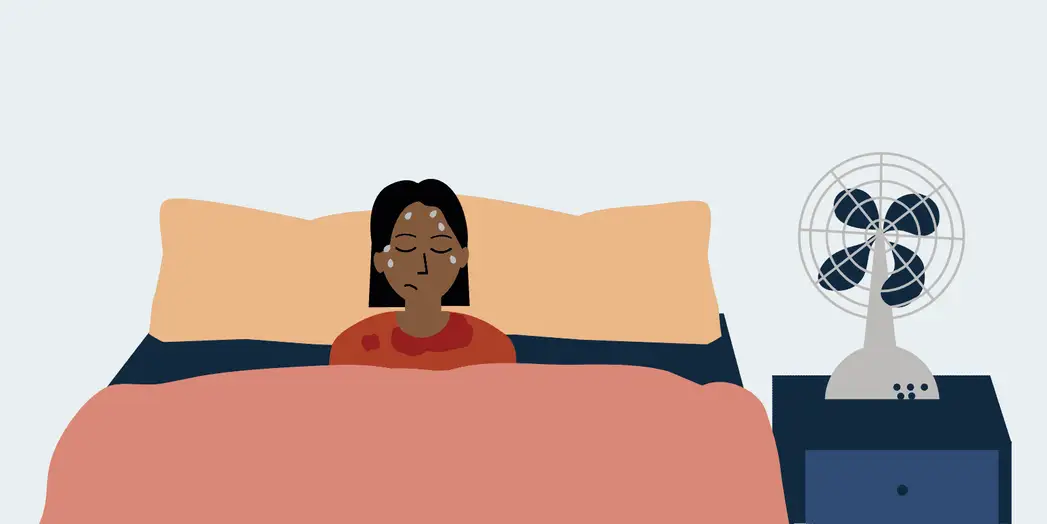
Optimal temp = optimal sleep
Getting the best temperature for sleep requires the right combination of:
- air temperature
- bedclothes
- nightwear.
When your bedroom’s too hot at night, consider opening a window or using a fan. On the other hand, when your room’s too cold, look at ways to heat it. Draughts can be one problem that can lead to a cold room. If you can fix draughts by finding and blocking up the source, great.
If not, you could try hanging thick curtains at the windows, using rugs to minimise floor draughts or using a draught excluder to stop draughts from under the door. Consider the practicalities of moving your bed if you’re sleeping in a draught.
Are your bed covers making you too hot or not keeping you warm enough? You’ll probably wake during the night. If this sounds familiar to you, it’s worth changing to bedding that’s better adapted to your needs.
Achieving the right temperature can also be complicated if you have a bed partner as they may need different conditions to you to achieve their comfortable sleep temperature.
An ideal compromise is having layers of bedding so that each bed partner can choose their comfort zone. Another option is to invest in a type of duvet known as a dual tog, partner or split tog duvet.
This is a duvet where one half is a higher tog rating (thicker) than the other side, allowing both bed partners to enjoy their perfect temperature under the covers.
Finally, changing your nightwear can be a cost-effective way to achieve the right temperature at night. Long-sleeves, short-sleeves, t-shirt, flannel, shorts, trousers… there’re many options to explore here!
Hopefully now you’re clear on the ins and outs of temperature and how to use it to help you sleep. We’ll move on to another big factor in creating your perfect bedroom environment: how light is your bedroom?
Light levels in your bedroom can affect sleep
It might help here to think about the light sources in your room. How is your room lit? Do you have bright overhead lights, spotlights, wall lights, lamps or a mixture of these? When you’re lying in bed, does light flood in from a window or under the door or is your room pitch black?
Bedroom light levels are incredibly important when it comes to getting a good night’s sleep. We’ve already briefly introduced melatonin, the hormone that’s key to you feeling sleepy at night. In response to light levels decreasing in the evening, melatonin levels rise in your body.
This rise is the signal for your brain and body to start preparing for sleep. As the evening gets darker, you should naturally start to feel sleepier and the need for sleep will increase, until you’re ready to hit the hay.
But what happens when you step into your really brightly lit bedroom? Light suppresses melatonin, so if your bedroom (and house in general) is too light then melatonin signalling is going to be affected.
Internally, your brain and body will be confused. Is it time to go to sleep or does this bright light mean you should wake up? Thankfully, there’re some really simple measures you can take to limit the effects of light in the run up to sleep.
As bedtime approaches, you want the lighting in your home, especially your bedroom, to be low so banish any bright lights from this space. Consider lamps that project light downwards (not directly towards your eyes) and keep bright lightbulbs out of your sleep space.
When you’re ready to sleep, turn all light off. It’s worth noting that even with your eyes closed, light will enter through your eyelids and be registered by your brain. Try not to fall asleep with a lamp or nightlight in the room. Your bedroom needs to be as dark as possible.
But how dark is dark?
If during the night, you can stand at one side of your bedroom and see the opposite wall then your bedroom is much too bright. Even small amounts of light, for example from the display on your alarm clock or light that spills in from under a door, can have an impact on your sleep.
We’ve already mentioned your tv/tablet/smart phones emit light that can interfere with your sleep, so it’s best to keep these out of your bedroom.
You can reduce light in your bedroom by:
- using thick curtains or blackout blinds to block light from outside
- removing or covering light-producing devices — this includes bedroom clocks
- investing in a well-fitting sleep mask.
Of course, we’re all different and some people don’t mind sleeping in a light bedroom. If you do have a light room and are happy with it, as long as you sleep well and feel awake and alert during the day then don’t worry.10 11
If lightness levels are waking you during the night or you’re not sleeping well and you know your room is on the brighter side, taking steps to reduce your light exposure is something to really consider when crafting your perfect bedroom.

Noise levels — silence is golden
Your bedroom should be as quiet as possible. We’re probably all aware that noise can disturb sleep. Studies have shown that noise can lead to fragmented sleep and reduce how long you sleep for overall.12
You might not even be aware that a certain noise is disturbing your sleep. Even though the noise may be rousing you from sleep, it might not be enough to wake you.13
In the short-term if your sleep’s being disturbed by noise, you may experience alterations in your mood, feel increasingly sleepy during the day and find it difficult to concentrate and be productive.
Over the much longer term, poor sleep due to noise can lead to chronic sleep disruption. This can affect how well your immune system functions and may increase your risk of developing health problems such as cardiovascular disease, diabetes and cancer.12 14
So why can’t we just switch off and sleep through noise? It’s likely down to how we’ve evolved. For our distant ancestors being fast asleep came with the threat of something big and hairy being able to find and eat you, so we likely evolved to be aware of threats even whilst asleep.
During sleep your eyes are closed, so your body can’t rely on your vision to alert it to potential threats. What happens instead is that your hearing continues to provide your brain with information about your environment, while you’re fast asleep.
In fact, during the night, you rouse from sleep hundreds of times to check that everything’s still safe and secure.15 16 These arousals are very short, no more than 1-2 seconds, and you won’t be aware that you’re waking up.
Irregular noise will disturb sleep
You won’t wake up to each and every noise around you. If your brain doesn’t detect anything of importance then you’ll continue to sleep through the noise. For example, something like the sound of a ticking clock might be registered by your brain while you’re sleeping, but it won’t wake you.
If you perceive something in the environment that’s not right (an unexpected noise like a loud bang, your cat meowing or a thunderstorm outside) your brain needs to be sure that this isn’t a threat and so you’ll become fully awake to process what’s going on.

It’s possible to get used to sounds that initially disturb your sleep. This usually takes at least a couple of weeks as your brain works out that a particular noise isn’t a threat and it’s safe for you to ignore it.
For example, imagine you move from the quiet of the countryside to the bustle of a city centre. At first, the sounds of the city such as sirens, traffic and people talking may stop you from getting to sleep or wake you up during the night.
Jump forward to a few weeks later and your brain should have made the connection that these city noises are just part of the normal background in your new location and your sleep should be much less disrupted by them.
The fact that we can adapt to some sounds with time doesn’t help when we’re staying somewhere temporarily. For instance, if you’re on holiday or away on a short work trip it’s unlikely you’ll adapt to the noises.
Of course, if a sound is loud enough then it’ll wake you up. This is particularly relevant in the later part of the night when your sleep is naturally lighter and more easily disturbed.
So ideally, your bedroom should be as quiet as possible. But what can you do when this isn’t possible? If you can’t create a quiet bedroom then you could try using other, less intrusive sounds to block the other sound out. Examples here include:
- the drone of an electric fan
- a pink or white noise machine or app
- relaxing music
- nature noise generators, like rain noise or ocean sounds.
These sounds can distract your brain from more disruptive noises. It doesn’t really matter what noise you listen to. The most important thing is that your brain doesn’t have to listen to it actively. It’s just there in the background.
How to block out noise if you share your sleep space
If you share a room or have a bed partner, your options for cancelling out background noise might be limited. Sharing your sleep space can definitely come with its own obstacles when it comes to sleep.
You may have different tolerances to intrusive noises or one of you may not appreciate falling asleep to the sounds of the ocean, for example. Your room mate could also be the source of your disturbed sleep if they snore.
If you do want to fall asleep to noise but don’t want to disturb those around you, there’re a huge range of styles of both in-ear earbuds and over-ear noise cancelling headphones on the market designed to be worn during sleep.
If sleeping with a backdrop of soothing sounds isn’t for you, you could try noise-blocking earplugs to block out any background noise instead. Earplugs come in a range of styles and materials, so there’s plenty of choice available to you.
Coming back to the topic of sharing your sleep space: if you share with someone who snores, this can be a real challenge. Especially if banishing them from the bedroom isn’t an option. Ear plugs or noise-blocking earphones could help, but you should also tell the person they’re snoring.
Some people won’t even realise they snore at night, so it’s worth making them aware of their snoring whether it’s disturbing your sleep or not. There’re plenty of reasons why people snore and lots of different approaches available to reduce snoring.
Snoring can affect the snorer’s sleep quality too, so letting someone know they snore can help them to improve their sleep, as well as hopefully improving your own!
Sometimes snoring can indicate a sleep disorder: obstructive sleep apnea (OSA). With OSA, a person may grunt, snore or gasp for breath during their sleep. If you suspect this condition, it needs following up with a healthcare provider for an official diagnosis and appropriate treatment options.
Your bedroom furnishings can help reduce household noise
Adding a rug to your bedroom floor can dampen some bedroom noises and thick curtains not only block out unwanted light, they also help to reduce noise from outside your window. Fabric wall hangings and tapestries are another option to help absorb noises from adjacent rooms too.
Also, don’t forget to consider noise from your bed itself. If your bed frame or mattress creaks, squeaks or makes noises that disturb your sleep, it may be worth checking for loose screws and bolts that need tightening up.
Alternatively, it could be time to look into changing your bed frame and mattress, so we’ll cover that now.
Are you worried about your sleep?
We can work with you to find the root cause of your sleep problems and help you to improve your sleep.
A good bed is an investment
When it comes to the quality of our sleep, we tend to overlook how important our bed truly is. But if you think about it, you probably spend around a third of each day in bed. In your lifetime, you’ll likely spend more time in bed than you’ll spend in any other single location.
If you’re going to spend so much of your time in bed, you deserve to be comfortable doing it. Good sleep is key to maintaining your mental and physical wellbeing. Investing in a new mattress that helps you to sleep well is the gift that keeps on giving.
When you put all this together, your bed plays a pretty important role in your daily life, so replacing a bed that’s not helping your sleep is a sensible idea.
While beds can feel pricey, a good mattress can last anywhere from 5-25 years (depending on what it’s made from and how you care for it) so it’s a fairly long-term investment.
If a new bed’s outside of your budget then a mattress topper could be a more cost-effective option to extend the life of your mattress and ensure you get a good night’s sleep.
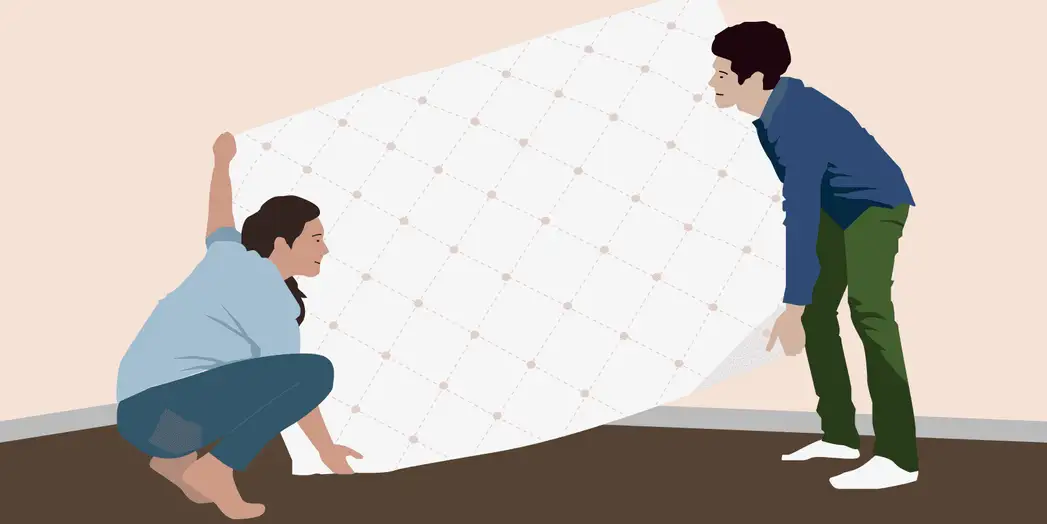
How to tell if your bed’s past its best
It may be time to invest in a new bed when:
- you wake up stiff, numb or with aches and pains
- you don’t sleep as well as you did
- your mattress feels uncomfortable
- your mattress or bedframe creaks when you move
- your mattress smells musty or unpleasant
- you and your bed partner roll towards the middle of the bed.
If you consider that each night you sweat a significant amount of moisture and shed a good amount of dead skin into your mattress then, for hygiene reasons alone, it’d be sensible to change your mattress once it’s past its best.
Keep in mind though: you can buy the best, most luxurious, most expensive bed on the planet and it won’t guarantee you sleep well. It’s only one ingredient in the recipe for a good night’s sleep.
If your lifestyle or bedroom environment are hindering your sleep then having an amazing bed will make little difference.
What to consider when buying a new mattress
Science can’t measure mattress comfort — it’s definitely a matter of personal choice. Mattresses differ in the comfort and support they can provide, so the only way to choose one that’s right for you is to go out and test some.
The key to buying a mattress lies in the line of your spine. If a mattress is right for you, your spine should:
- be straight when you lie on your side
- maintain a natural curve when you lie on your back.
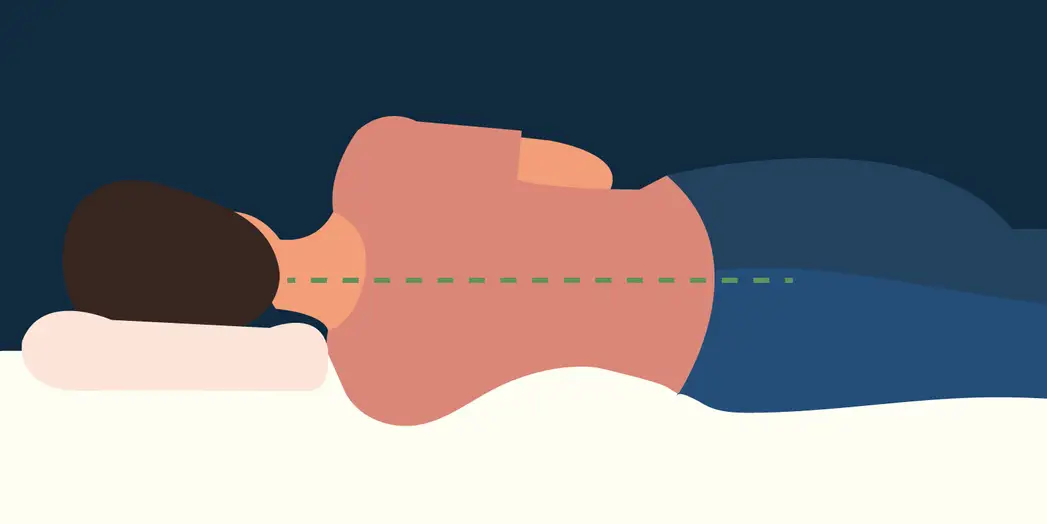
You want to make sure that you’re sleeping in the bed and not on the bed. This might sound a little confusing, but we’re talking about the firmness of the mattress.
If the mattress is too hard, your hips and shoulders won’t be able to sink down into the mattress and your spine won’t be lying straight.
When a mattress is too soft, you’ll find yourself sinking into it too much and it won’t provide enough resistance against the weight of your body.
With either of these scenarios, the result is likely to be that you wake with aches and pains after a poor night’s sleep. Thankfully, we’ve got some excellent tips on how to test out a new mattress before you buy.
How to test out a new mattress
For many of us, testing a mattress will at best involve sitting and bouncing on the edge of the mattress to see how firm or soft it is and a relatively quick and self-conscious lie down to see how it feels.
Unfortunately, this isn’t a great way to test your future purchase. Ideally, when you’re testing a mattress, you should lie on it for at least ten minutes.
Most of us will fall way short of this ten minute limit, but testing a mattress for a longer time means you’re more likely to assume more of the positions you’ll take during your night’s sleep.
You naturally move 40-60 times each night. 10-20 of these are movements are major positional changes, like turning over or changing sides, the rest are smaller adjustments, like moving an arm or leg.
You should also feel what it’s like when you try to roll over. If it:
- takes a lot of effort to turn over, the mattress is too soft
- feels uncomfortable on your hips and shoulders, it’s too firm.
One other trick for testing the bed is when you’re lying on your back, place your hand between your back and the mattress.
- If you can hardly get your hand in, then it’s too soft.
- If this is easy and it feels as if your hand’s in a space, then the mattress is too hard.
So now you know how to check whether your mattress needs replacing and what you should consider if you’re going to invest in a new one. Let’s move on to looking at how your bedding is also important in creating your ideal bedroom setup.
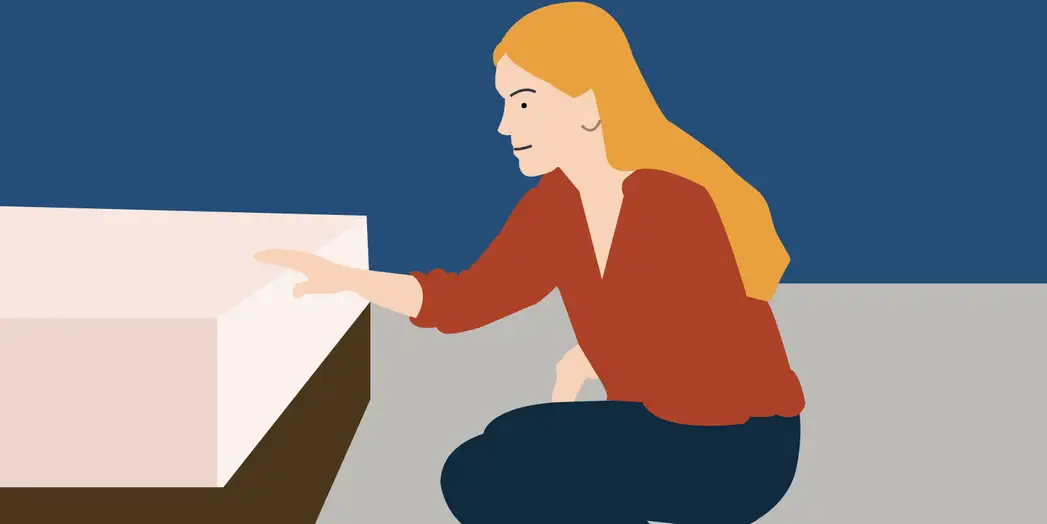
Your bedding plays a role in how well you sleep
We all have our own preferences when it comes to bedding. Some people like soft and cosy flannel sheets, others prefer the cool, crispness of cotton. What’s important is that your choice of bed sheets feel comfortable and don’t leave you feeling too hot or too cold in bed.
We’ve already mentioned sleep associations, but a good one to mention here is making your bed. We don’t want to sound preachy, but you should aim to make your bed every morning. It can help you to feel more productive: making your bed is the first task of the day successfully completed.
Not only will it make your room look visually appealing (and so helping you to feel calm and relaxed) it can actually help you sleep at night. How does it do this?
If part of your routine every night is that you come into your room with its nicely made bed, and turn the sheets back as you get in, then your brain will start to make the link between this activity and that sleep soon follows. This is another example of a positive sleep association.
In addition to your bed linen, you also want to think about the pillows and duvet that you put on your bed. When it comes to picking the perfect pillow or duvet, there’s a little more that you can consider, so we’ll go into that next.
Finding the perfect pillow
Your pillow should support your head and neck in the same way that your mattress should support your body. So it’s essential that your pillow works with your mattress to provide the correct support.
Again, the only way of judging if a pillow will be comfortable for you is to actually try it out on a bed in the same way that you would use it at home.
Pillows come in a range of materials, thicknesses and densities. Plus, different types of pillows are available for back sleepers, side sleepers, stomach sleepers and people with neck pain, so there’s a lot of variety for you to choose from.
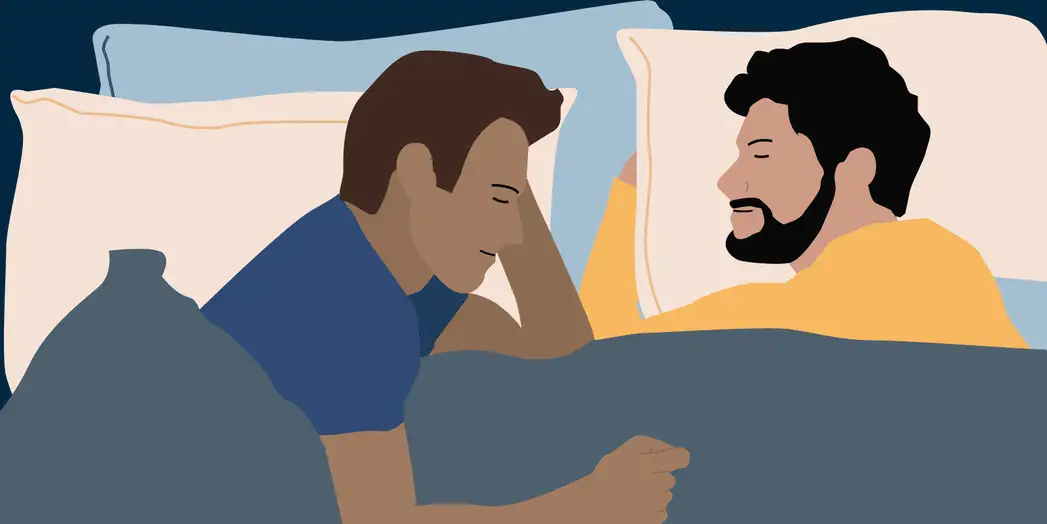
The right duvet can make a real difference
Your duvet is important for regulating your heat in bed so having too thick or too thin a duvet will affect your body temperature during the night. This can make getting good sleep more difficult.
Unlike mattresses and pillows, duvets helpfully have a standard classification system: the tog rating. So regardless of what the duvet is made of, you know that a particular tog is designed to provide a specific level of warmth.
There’s a lot of choice when it comes to choosing a duvet. They can be made of a range of materials and contain different fillings. They can be lightweight through to heavy and may be marketed for use in different seasons or sold as multi-season.
Lots of us will be guilty of just reading the packaging and checking the price before sticking a new duvet in the trolley and moving on. Next time you pick a duvet take a moment to feel the material and thickness, read the tog and try to gauge if it’ll be warm or cool enough for your current needs.
Taking care of your bedding
It’s recommended that you wash your bedding once a week or every two weeks at most. Your bedsheets collect all the dust, dirt, dead skin cells, oil, drool and sweat that your body naturally sheds while you sleep.
Add in allergens such as dust mites and pollen that will settle on your bedding and it becomes really easy to see why you should be washing your bedding regularly!
You might find you want to change your sheets even more often:
- if your allergies are flaring up (for example, when pollen counts are high if you have hay fever)
- during hot weather, when you could be sweating more
- if you sleep with a pet on the bed
- after an illness.
If you want to ensure dust mites and other allergens are removed during cleaning, it’s best to wash your sheets at a temperature above 55°C (130°F), but don’t forget to double check the label on your bedding first!17
As well as washing your bedding regularly, you should consider also washing your pillows and duvet from time to time. Aim to wash them at least twice a year, more often if you sweat a lot.
You should replace your pillows if they’re starting to discolour or if they’ve lost their form and aren’t offering you the support you need while you sleep. Similarly, you should consider replacing your duvet if it’s discoloured or you think it’s not the right duvet for you any more.
You can also use protectors for your mattress, pillows and duvet, which can help keep them clean under your bedding and may also boost their lifespan.
While these seem like cleaning tips more than sleep tips, it’s a fact that changing your sheets fairly frequently to keep dust, dirt and allergen levels low may help you to sleep better so it’s something that shouldn’t be overlooked in your quest for the perfect bedroom setup.
Ventilation is also important
Your bedroom shouldn’t be stuffy ― fresh air is good for sleep. Opening the window lowers the levels of carbon dioxide in the air and this has been shown to improve the quality of sleep.18
Like we mentioned earlier, keeping your room dust-free and changing your bedding regularly can help you sleep well.
Plants can help to keep the air in your room clean and fresh too. In 1989, NASA released this helpful study of the best houseplants for filtering your air.
Though if plants aren’t your thing or you have allergies, don’t feel like you have to include them in your room. It’s all a matter or personal preference and you’re working on creating your perfect bedroom, so do what works for you.
While we’re on the topic of the air you breath in your bedroom, it’s worth mentioning how scents can influence your sleep. For some people, essential oils may help them relax and sleep at night.19 20
Lavender essential oil or dried lavender is one scent that many people find help them relax and sleep. In fact, researchers found that the scent of lavender can increase deep sleep.21 So if you like scents in your room, lavender may be one to consider.
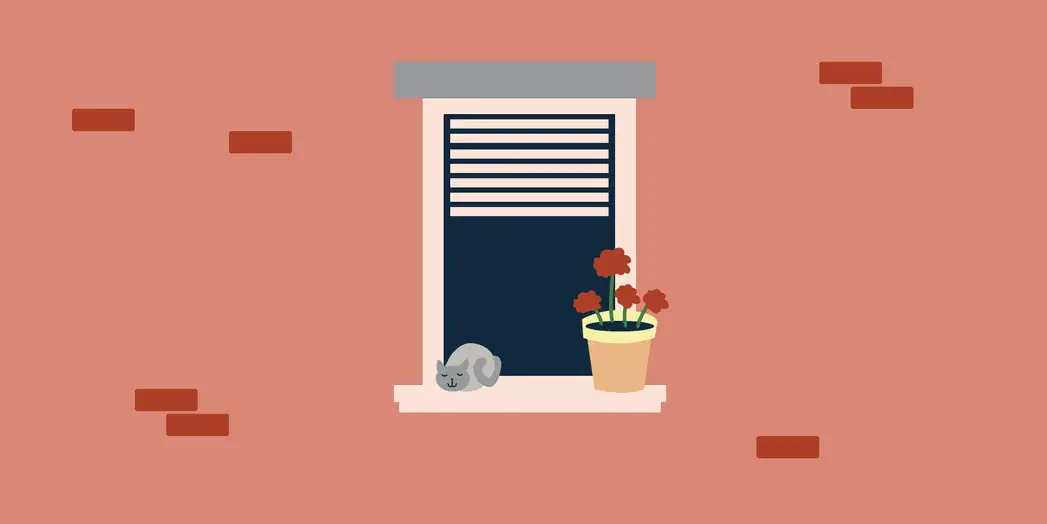
Tried all of the above but you still can’t sleep?
The advice and tips in this article should help you to make your bedroom the perfect place for a good night’s sleep. But what happens if you’re still not getting the sleep you need, even with a great bedroom setup?
Your sleep environment is only one of many factors that can influence your sleep. If you think your sleep trouble is part of a bigger problem, then it’s worth considering if you could have a sleep disorder.
Difficulty falling asleep, staying asleep or waking in the night and not being able to get back to sleep can all be signs of insomnia. This is the most common sleep disorder and thankfully, insomnia responds very well to treatment.
This is where we can help. Our sleep improvement programme has been clinically validated and uses Cognitive Behavioural Therapy for insomnia (CBTi), the gold standard treatment for insomnia.
So how does it work? Firstly, we help you identify the underlying causes of your sleep problem. We’ll then work with you to create a personalised plan to get your sleep back on track.
You’ll learn how to create healthy sleep habits — creating the perfect sleep environment is just one example of this. Our course helps you to improve all aspects of your sleep hygiene, to ensure you’re getting the best sleep possible.
Plus at every step of the way, our team of highly-trained sleep coaches use this knowledge and expertise to guide and support you so you’ll never feel alone on your journey back to great sleep. We’ve helped many thousands of people improve their sleep so why not see if we can help you today?
Summary
There’s a lot to consider when you’re creating your perfect bedroom, but don’t feel like you have to change everything at once. Your overall aim is to make your bedroom as good a place as it can be for you to wind down and rest your senses.
We’ve covered:
- sight: your bedroom needs to be as dark as possible
- sound: your bedroom should be as quiet as possible but if that’s not achievable then you can use a noise generator to provide non-arousing background noise
- touch: your bed needs to be suited to your body, meaning the nature of the mattress and duvet need to be taken into account
- temperature: your sleep environment needs to be the right temperature for you to feel comfortable and there are a number of ways to achieve this.
Naturally, creating the ideal bedroom environment is just a starting point for a good night’s sleep. If you feel like your sleep setup is close to ideal yet you still find it hard to sleep then take our sleep quiz to see how Sleepstation could help.
References
- McMains S, Kastner S. Interactions of top-down and bottom-up mechanisms in human visual cortex. J Neurosci 2011; 31: 587–597. ↩︎
- Aggarwal P, Senthilkumaran S. Dust Mite Allergy. In: StatPearls [Internet]. StatPearls Publishing, 2022. ↩︎
- Leger D, Bonnefoy B, Pigearias B, de La Giclais B, Chartier A. Poor sleep is highly associated with house dust mite allergic rhinitis in adults and children. Allergy Asthma Clin Immunol 2017; 13: 36. ↩︎
- Kurt S, Osueke KK. The effects of color on the moods of college students. SAGE Open 2014; 4: 215824401452542. ↩︎
- Costa M, Frumento S, Nese M, Predieri I. Interior color and psychological functioning in a university residence hall. Front Psychol 2018; 9: 1580. ↩︎
- Lee S, Kim D. Effect of color light stimulation using LED on sleep induction time. J Healthc Eng 2017; 2017: 1–8. ↩︎
- Harding EC, Franks NP, Wisden W. The temperature dependence of sleep. Front Neurosci 2019; 13. ↩︎
- Strøm-Tejsen P, Mathiasen S, Bach M, and Petersen S. The effects of increased bedroom air temperature on sleep and next-day mental performance. July 2016 Conference: The 14th International Conference of Indoor Air Quality and Climate. At: Ghent, Belgium Volume: Paper 640. ↩︎
- Okamoto-Mizuno K, Mizuno K. Effects of thermal environment on sleep and circadian rhythm. J Physiol Anthropol 2012; 31: 14. ↩︎
- Phillips AJK, Vidafar P, Burns AC, McGlashan EM, Anderson C, Rajaratnam SMW, et al. High sensitivity and interindividual variability in the response of the human circadian system to evening light. Proc Natl Acad Sci U S A. 2019;116(24):12019–24. ↩︎
- Chellappa SL. Individual differences in light sensitivity affect sleep and circadian rhythms. Sleep. 2021;44(2). ↩︎
- Basner M, McGuire S. WHO environmental noise guidelines for the European region: A systematic review on environmental noise and effects on sleep. Int J Environ Res Public Health. 2018;15(3). ↩︎
- Halperin D. Environmental noise and sleep disturbances: A threat to health? Sleep Sci 2014; 7: 209–212. ↩︎
- Medic G, Wille M, Hemels ME. Short- and long-term health consequences of sleep disruption. Nat Sci Sleep 2017; 9: 151–161. ↩︎
- Kjaerby C, Andersen M, Hauglund N, Untiet V, Dall C, Sigurdsson B et al. Memory-enhancing properties of sleep depend on the oscillatory amplitude of norepinephrine. Nat Neurosci 2022; 25: 1059–1070. ↩︎
- Halász P. Hierarchy of micro-arousals and the microstructure of sleep. Neurophysiol Clin 1998; 28: 461–475. ↩︎
- McDonald LG, Tovey E. The role of water temperature and laundry procedures in reducing house dust mite populations and allergen content of bedding. J Allergy Clin Immunol 1992; 90: 599–608. ↩︎
- Strøm-Tejsen P, Zukowska D, Wargocki P, Wyon DP. The effects of bedroom air quality on sleep and next-day performance. Indoor Air. 2016;26(5):679-86679-86. ↩︎
- Lillehei AS, Halcon LL. A systematic review of the effect of inhaled essential oils on sleep. J Altern Complement Med 2014; 20: 441–451. ↩︎
- Fismer KL, Pilkington K. Lavender and sleep: A systematic review of the evidence. Eur J Integr Med 2012; 4: e436–e447. ↩︎
- Goel N, Kim H, Lao RP. An olfactory stimulus modifies nighttime sleep in young men and women. Chronobiol Int 2005; 22: 889–904. ↩︎
